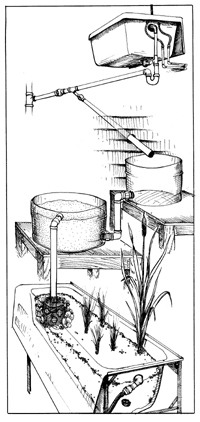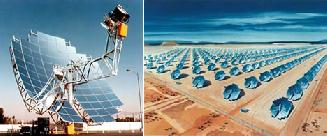
Have you ever thought about the amount of water you use each day? How much water do you spend to flush your toilet? How much water do you use to wash your favourite car or bike and how much of it is used to clean your alley and passages? How much of this goes down the drain without being used and how much of it could be reused?
Hey! Don’t take paper and pencil in your hand for calculating the amount of water you use a day. If you live in a city, the answer is very simple-‘huge amount of water’.
Water, as every one knows, is vital for life. And for we humans, it is all the more important as we use it for many more purposes other than drinking and bathing.
Much of water used in our homes can be reused-as it is or after recycling. This idea of recycling gray water, the water that has been used in homes excluding that used in toilets, is becoming a movement in the West. Water-conserving gray houses are part of the movement catching up in the West-especially in arid regions. Many homeowners have installed complex plumbing systems based on techniques developed by researchers like Greywater Gurrillas.
Woelfle-Erskine, a writer and teacher who lives in a house with a gray water system in California says:
It’s about trying to use resources to their full potential and interact with ecosystems in a beneficial way.
 Woelfle-Erskine’s ‘Haut House’, for House of Appropriate Urban Technology, has several gray water systems in his house. In one of the systems, a pipe running from house deposits sink and shower water into an elevated bathtub filled with gavel and reeds. The roots of the plants begin filtering and absorbing contaminants. The water then flows into another bathtub again containing reeds, placed lower than the first. The water then flows in the third tub, placed lower than the second and containing water hyacinths and small fish.
Woelfle-Erskine’s ‘Haut House’, for House of Appropriate Urban Technology, has several gray water systems in his house. In one of the systems, a pipe running from house deposits sink and shower water into an elevated bathtub filled with gavel and reeds. The roots of the plants begin filtering and absorbing contaminants. The water then flows into another bathtub again containing reeds, placed lower than the first. The water then flows in the third tub, placed lower than the second and containing water hyacinths and small fish.
Woelfle-Erskine says:
We’ve had the water tested and it’s clean – there’s just a little phosphorous left, which the plants in the garden actually like.
The gray water recycling system in Woelfle-Erskine’s ‘Haut House’ is one of the simpler systems. Many other systems can be too complicated and expensive.
Though the gray water recycling is nice way to conserve water, there are a number of precautions to be taken with it. An open gray water pond can be a mosquito-breeding ground. Recycled gray water should not be used for drinking, bathing including that by pets. This water should only be used to irrigate roots and not be sprinkled on fruits and vegetables. And few more precaution including ensuring that the gray water does not get contaminated with black water from toilets and that it is not mistaken for fresh water.
The gray water system recalls me of the banana plants around the well and on the sides of the drain that took water out from our village home. The banana roots are known to absorb lot of contaminants from the used water, obviously gray water. There is lot things that we can use from our traditional knowledge including the most simple gray water system in our villages.
Read more about constructing a wet land system at www.greywaterguerrillas.com.
Source: NY Times
Image Source: Greywaterguerrillas.com, NY Times




